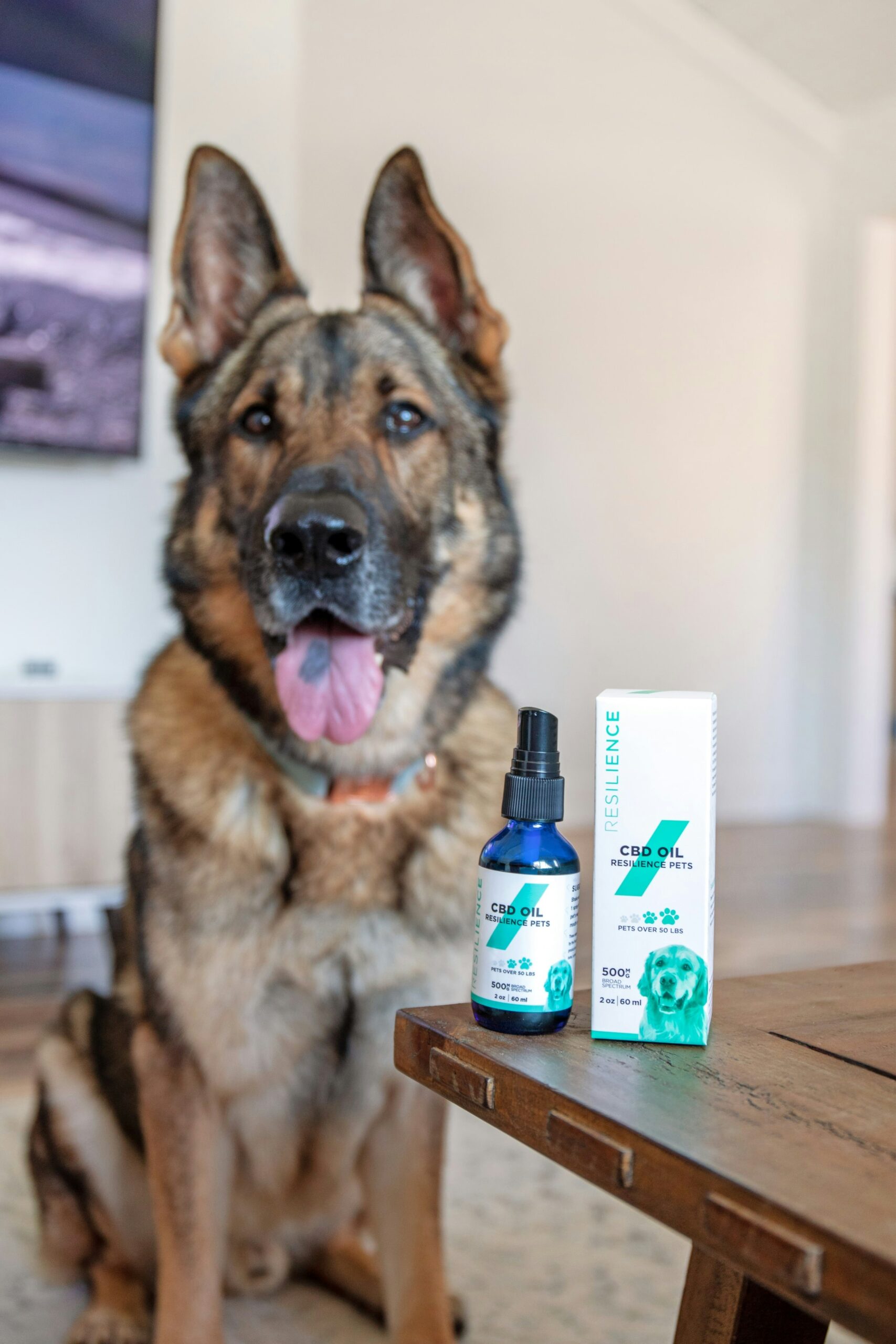Ultimate Pet Nutrition Guide: What Should Your Pet Really Be Eating?
Introduction to Pet Nutrition
Pet nutrition plays a pivotal role in the overall health and well-being of our furry companions. Much like humans, pets require a balanced and nutritious diet to maintain optimal health, sustain their energy levels, and promote longevity. However, the dietary needs of pets are distinct from those of humans. Understanding these differences is crucial for pet owners who strive to provide the best care possible for their beloved animals.
Proper nutrition helps support various bodily functions in pets, including growth, immune response, and muscle maintenance. An appropriate diet can prevent numerous health issues, such as obesity, diabetes, and gastrointestinal disorders. Moreover, each pet’s dietary requirements can vary significantly depending on factors such as age, breed, size, and activity level. Tailoring a diet to meet these specific needs ensures that pets receive the appropriate nutrients essential for their overall health.
Pet owners bear the responsibility of guaranteeing that their pets’ nutrition is well-balanced. This involves selecting high-quality pet food that meets the nutritional standards and may include consulting with veterinarians to develop a customized dietary plan. Pet food should ideally contain the right proportions of proteins, fats, carbohydrates, vitamins, and minerals to cater to the unique needs of each animal. Unlike human food, which often contains ingredients that can be harmful or incomprehensible to pet’s digestive and metabolic systems, specially formulated pet food is designed to provide a complete nutritional profile tailored to pets.
In summary, pet nutrition is an integral aspect of responsible pet ownership. By investing in a balanced diet tailored to their specific dietary needs, pet owners can ensure their pets live healthy, energetic, and long lives. With the right nutrition, pets can thrive physically and mentally, reinforcing the importance of making informed decisions regarding their dietary intake.
Understanding Essential Nutrients for Pets
Ensuring that your pet receives the right nutrients is critical to their overall health and longevity. Pets, much like humans, require a balanced intake of proteins, fats, carbohydrates, vitamins, and minerals to thrive. Each of these essential nutrients plays a unique role in supporting various bodily functions and maintaining optimal health.
Proteins are the building blocks of your pet’s body, crucial for growth, muscle repair, and the functioning of the immune system. High-quality sources of protein include chicken, turkey, fish, and certain plant-based proteins. Fats, another vital nutrient, provide concentrated energy and support cell structure. Omega-3 and omega-6 fatty acids, found in fish oil and flaxseed, are particularly beneficial for maintaining healthy skin and a glossy coat.
Carbohydrates often form a significant portion of commercial pet foods. They are a source of energy and help in the functioning of the digestive system. Whole grains such as brown rice and oats, as well as vegetables like sweet potatoes, are excellent sources of carbohydrates for pets. However, it’s crucial to ensure that carbohydrates do not constitute an excessive portion of your pet’s diet, as this can lead to weight gain and related issues.
Vitamins and minerals are micronutrients that, although required in smaller amounts, are essential for a multitude of bodily functions. Vitamins such as A, D, E, and K play roles in vision, calcium absorption, and antioxidative functions, whereas B-vitamins support metabolism and energy production. Minerals like calcium and phosphorus are important for bone health, while trace minerals such as zinc and selenium support immune health and thyroid function.
It’s essential to provide a balanced diet that avoids deficiencies and excesses of these nutrients. For example, Vitamin A deficiency can lead to skin and vision problems, whereas an excess can cause toxicity symptoms like bone pain and dehydration. Similarly, a lack of calcium can result in bone maladies, but too much calcium may cause skeletal abnormalities, especially in growing pets.
Nutrient-rich foods suitable for pets include lean meats, fish, eggs, fruits, and vegetables. It is advisable to consult with a veterinarian to formulate a diet tailored to your pet’s specific needs, considering factors such as age, breed, and health status. A well-balanced diet is key to ensuring your pet lives a healthy, happy life.
Species-Specific Dietary Needs
The dietary requirements of pets vary significantly based on species, reflecting their distinct digestive systems, natural diets in the wild, and overall physiology. Ensuring that your pet receives species-appropriate nutrition is essential for their health and longevity.
Dogs
Dogs are omnivorous, and their diet should consist of a balanced mix of proteins, carbohydrates, fats, vitamins, and minerals. Quality sources of animal protein are crucial for muscle maintenance and overall health. Additionally, carbohydrates provide energy, while fats aid in the absorption of vitamins and support skin and coat health. A mix of dry kibble and wet food can offer a balanced nutrition profile; however, it’s critical to avoid foods that contain excessive fillers or artificial additives.
Cats
Cats are obligate carnivores, meaning their diet must be rich in animal-derived protein. Taurine, an amino acid found primarily in meat, is indispensable for heart and eye health. While carbohydrates should be minimal in a cat’s diet, fats are a necessary energy source. Fresh water is essential as cats have a low thirst drive. Including wet food can help increase their overall water intake, aiding kidney function.
Birds
The dietary needs of birds are diverse and highly species-specific. For example, parrots require a varied diet of seeds, fruits, vegetables, and specialized pellets, whereas finches may thrive on a primarily seed-based diet with supplemental greens and fruits. Clean, fresh water should always be available. Regular dietary adjustments based on specific bird species are crucial for avoiding malnutrition and promoting overall wellbeing.
Small Mammals
Small mammals, such as rabbits, guinea pigs, and hamsters, have unique dietary needs as well. Rabbits and guinea pigs are herbivores requiring a diet high in hay for dental and digestive health, along with fresh vegetables and specially formulated pellets. Vitamin C is particularly vital for guinea pigs, as they cannot synthesize it themselves. Hamsters, being omnivorous, benefit from a mix of grains, fresh vegetables, and protein sources like boiled eggs or mealworms.
Understanding these species-specific dietary needs and providing a well-balanced, appropriate diet is critical for ensuring the health and happiness of your pet. Always consult with a veterinarian to tailor nutrition plans to meet the unique needs of your furry, feathered, or scaled companions.
Commercial vs. Homemade Pet Foods
When considering the optimal diet for pets, one must weigh the benefits and drawbacks of commercial pet foods against homemade diets. Commercial pet foods boast the advantage of convenience. Pre-packaged and ready-to-serve, they fit effortlessly into the busy lives of pet owners. These foods are designed to be nutritionally complete, formulated with the necessary vitamins, minerals, and macronutrients required for a pet’s health. Additionally, commercial options are produced under stringent quality controls to ensure safety, reducing the risks of contamination and nutrient imbalances.
Conversely, homemade diets offer pet owners full control over the ingredients used, which can be particularly beneficial for pets with specific dietary needs or food allergies. Such customization allows for the omission of certain allergens and the inclusion of fresh, high-quality ingredients. Homemade meals also grant the flexibility to alter recipes based on a pet’s changing health status or preferences.
However, creating a nutritionally complete homemade diet demands a thorough understanding of a pet’s dietary requirements. This may include the inclusion of protein sources, carbohydrates, fats, vitamins, and minerals in appropriate ratios, and adjustments based on age, size, and activity levels. It is crucial to consult with a veterinary nutritionist to formulate balanced recipes. Inadequate nutrition can lead to deficiencies or excesses, causing health problems over time.
For pet owners inclined towards homemade diets, there are several tips to ensure their pet’s nutritional needs are met. First, use a variety of fresh ingredients to cover all essential nutrient bases. Second, consider incorporating supplements as advised by a nutritionist to compensate for any potential dietary gaps. Lastly, regularly reviewing and adjusting the diet based on ongoing veterinary health check-ups is key to maintaining optimal nutrition.
In conclusion, both commercial and homemade pet foods come with their own sets of benefits and challenges. The choice largely depends on the owner’s lifestyle, the pet’s specific health requirements, and the availability of resources to prepare balanced meals.
Reading Pet Food Labels
When it comes to ensuring your pet receives optimal nutrition, comprehending pet food labels is crucial. These labels offer a plethora of information that, when understood correctly, can guide you toward making informed dietary choices for your pet. Here’s a breakdown of key components and terms you might encounter on pet food labels.
One vital term to look for is ‘complete and balanced.’ This designation implies that the pet food provides all necessary nutrients in the correct proportions, following guidelines set by organizations such as the Association of American Feed Control Officials (AAFCO). Foods that meet these standards are suitable to serve as the sole diet for your pet, as opposed to those labeled for intermittent or supplemental feeding, which should be used alongside other food sources.
The Guaranteed Analysis section is another critical aspect of pet food labels. It displays the minimum or maximum percentages of specific nutrients—usually focusing on protein, fat, fiber, and moisture. By comparing these percentages, you can gauge the basic nutritional content of different products. However, remember that the Guaranteed Analysis provides baseline information; it doesn’t detail the quality or digestibility of the nutrients.
Pay close attention to the ingredients list, which is presented in descending order by weight. High-quality pet foods typically list specific meat sources like ‘chicken’ or ‘beef’ rather than generic terms like ‘meat by-products.’ Ingredient names like ‘corn gluten meal’ or ‘soybean meal’ indicate lower-quality protein sources. Avoid fillers, artificial preservatives, and excessive amounts of grains or artificial additives.
Nutritional adequacy statements often state if the food meets AAFCO standards for a specific life stage or diet, such as growth, reproduction, or adult maintenance. This statement ensures the food has undergone specific testing or formulation to meet the nutritional demands of pets at different stages of life.
By carefully examining these elements—‘complete and balanced’ labels, the Guaranteed Analysis, ingredient lists, and nutritional adequacy statements—you can better navigate the vast array of pet food options. This diligence ensures your pet’s diet is aligned with their health and wellness needs, paving the way for a happier and healthier life.
Common Dietary Misconceptions and Myths
The realm of pet nutrition is rife with misconceptions and myths, leading to confusion among pet owners about what constitutes a healthy diet for their furry companions. One prevalent myth is the supposed superiority of grain-free diets for pets. While these diets have gained popularity, they are not necessarily beneficial for all pets. In fact, several studies indicate that grain-free pet foods could be associated with certain health issues, such as dilated cardiomyopathy (DCM) in dogs. Contrary to popular belief, grains like rice and barley are a valuable source of essential nutrients, including fiber, which aids in digestion.
Another common misconception is the notion that pets can consume all human foods. While sharing a snack with your pet might seem harmless, many human foods are toxic to animals. For example, foods like chocolate, onions, and grapes can be extremely harmful and potentially fatal to pets. Even foods perceived as healthy for humans, such as avocados or certain nuts, can cause adverse reactions in pets. It is crucial to understand that pets have different metabolic requirements and their digestive systems are not equipped to handle many of the foods we eat on a daily basis.
Additionally, the idea that pets need varied diets similar to humans is unfounded. Unlike humans, pets do not require the same level of dietary variety and can thrive on consistent, well-balanced pet foods formulated to meet their specific nutritional needs. Rotating foods too frequently can disrupt a pet’s digestive system, leading to gastrointestinal issues.
Another myth worth addressing is the belief that all-natural or homemade diets are inherently superior. Though well-intentioned, homemade pet diets often lack the necessary balance of nutrients. Without careful planning and consultation with a veterinary nutritionist, these diets can result in deficiencies or imbalances.
Educating oneself on the evidence-based nutritional needs of pets is paramount. Pet owners should consult with veterinarians to develop appropriate dietary plans tailored to their pets’ specific health requirements. Dispelling these common myths is a significant step towards ensuring the well-being and longevity of pets.
Special Diets for Pets with Health Issues
As pets deal with various health issues throughout their lives, their dietary needs can significantly change. Allergies, obesity, diabetes, kidney disease, and digestive problems are common conditions requiring tailored nutrition strategies to ensure overall well-being. For pets grappling with allergies, it’s crucial to identify specific allergens, which often include common proteins like chicken or grains like wheat. Switching to hypoallergenic diets, which may contain novel protein sources or be free from certain grains, can alleviate symptoms and promote better health.
Obesity in pets is another condition that necessitates dietary adjustments. High-fiber, low-fat diets can help manage weight effectively. It’s essential to measure portions accurately and limit treats, opting instead for nutritionally balanced low-calorie options. Ensuring regular exercise, in conjunction with these dietary modifications, will facilitate a more comprehensive approach to weight management.
Diabetes in pets requires a special focus on consistent blood sugar levels. High-fiber, low-carbohydrate diets can help stabilize these levels. Foods with complex carbohydrates are preferable as they release glucose slowly, preventing spikes. Additionally, consistent feeding schedules play a significant role in managing diabetic symptoms effectively.
For pets with kidney disease, reducing the intake of phosphorus and sodium is fundamental to minimizing stress on the kidneys. Diets tailored for kidney health typically include higher quality proteins in controlled amounts, which help maintain muscle mass without exacerbating the condition. Hydration is equally critical, so incorporating wet food can be beneficial.
Digestive problems often require easily digestible diets with low-fat content. Probiotics and dietary fiber are sometimes included to promote gut health. Some pets might benefit from diets free of common irritants, which can be identified through an elimination diet or diagnostic testing.
Consulting with a veterinarian is indispensable when managing any of these health issues through diet. Veterinarians can provide personalized nutritional advice and ensure that any dietary changes support the pet’s overall treatment plan. Tailoring diets to specific health conditions not only ameliorates symptoms but also enhances quality of life for pets facing health challenges.
Tips for Transitioning Your Pet to a New Diet
Transitioning your pet to a new diet requires a thoughtful approach to prevent digestive upset and ensure your pet willingly accepts the new food. Gradual changes are essential; introducing the new diet in a phased manner helps pets adjust to the new flavors and textures while minimizing the risk of gastrointestinal issues.
Begin by mixing a small portion of the new diet with your pet’s current food. A common strategy is to replace 25% of the current food with the new diet for the first few days. Gradually increase the proportion of the new diet by 25% every few days, assuming your pet shows no signs of discomfort or adverse reactions. This process typically spans seven to ten days but can be extended if needed, particularly for pets with sensitive stomachs or specific dietary needs.
Monitoring your pet closely during this transition period is crucial. Watch for signs of digestive distress such as vomiting, diarrhea, or changes in appetite. Any adverse reactions should prompt a reevaluation of the transition pace. If symptoms persist, consult your veterinarian to ensure the new diet is appropriate for your pet.
Adjusting portion sizes is another critical aspect. Pets’ dietary needs vary based on their activity levels, age, and overall health. An overly active pet may require a higher calorie intake, while a less active or older pet might benefit from reduced portions. Employing a consistent feeding schedule can also aid in the successful adoption of the new diet.
Here is a step-by-step guide for transitioning your pet to a new diet:
- Days 1-3: Mix 25% of the new diet with 75% of the current food.
- Days 4-6: Adjust to a 50/50 mixture of the new and current diet.
- Days 7-9: Increase to 75% new diet and 25% current food.
- Day 10 onwards: Transition fully to the new diet.
This gradual approach, coupled with close monitoring and adjustments based on your pet’s unique needs, can ensure a smooth transition to a new, healthier diet, supporting their overall well-being.
Conclusion and Final Thoughts
As we conclude this comprehensive guide on pet nutrition, it is essential to highlight the key takeaways that every pet owner should remember. Firstly, the nutritional needs of pets vary significantly depending on their species, age, activity level, and health condition. Customizing their diet to meet these specific needs ensures they receive the right balance of proteins, fats, carbohydrates, vitamins, and minerals. Secondly, understanding food labels and being cautious about additives and fillers can help make better nutritional choices, directly impacting a pet’s overall well-being.
Ongoing education about pet nutrition plays a pivotal role in keeping pets healthy and happy. Staying informed about the latest research and trends in pet nutrition allows you to make knowledgeable decisions that enhance your pet’s quality of life. This knowledge extends beyond just food choices and encompasses understanding dietary supplements, portion control, and recognizing the signs of nutritional deficiencies or excesses.
Consulting with veterinarians and pet nutrition experts is invaluable. These professionals can provide personalized dietary advice tailored to the individual needs of your pet, taking into account any existing health issues or specific dietary requirements. Their guidance ensures that your approach to feeding your pet is both accurate and beneficial.
Remaining proactive in your pet’s nutrition involves regular monitoring of their health and adjusting their diet as necessary. This responsiveness helps in maintaining optimal health and preventing issues related to poor nutrition. Additionally, utilizing reputable sources and staying current with nutritional science can further aid in making informed and thoughtful dietary decisions for your pet.
Ultimately, a well-informed approach to pet nutrition not only contributes to the physical health of pets but also supports their emotional and behavioral well-being, creating a fulfilling and joyful life for them. By investing in their nutrition, you are investing in their happiness and longevity, ensuring they thrive in your care.















Post Comment